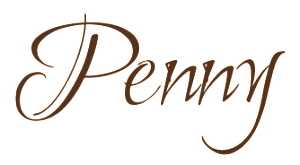Noopiming: The Cure for White Ladies is a bold reimagination of the novel, one that combines narrative and poetic fragments through a careful and fierce reclamation of Anishinaabe aesthetics.
Noopiming is Anishinaabemowin for “in the bush,” and the title is a response to English Canadian settler and author Susanna Moodie’s 1852 memoir Roughing It in the Bush. To read Simpson’s work is an act of decolonization, degentrification, and willful resistance to the perpetuation and dissemination of centuries-old colonial myth-making. It is a lived experience. It is a breaking open of the self to a world alive with people, animals, ancestors, and spirits, who are all busy with the daily labours of healing — healing not only themselves, but their individual pieces of the network, of the web that connects them all together. Enter and be changed.
When I read this description of Noopiming, I immediately considered it as a contender for the Giller Prize. I’ve even added it to my Longlist Predictions before I even opened it. The day I published my prediction list is the day I started reading this book. I would be surprised now, after finishing, if this doesn’t indeed make the Longlist.
It is wildly different, the description does state it is a unique take on the novel and indeed it is, and for me this worked so much more than Reproduction, last year’s Giller Prize winner did. Its many messages inside were wonderful. There was humour in how she took down the whites for their silly ways and beliefs that had me smiling often.
Things seem pretty fucked for the humans, to be honest. The white ones who think they are the only ones have really structured the fucked-up-ness in a seemingly impenetrable way this time. A few good ones get their footing, and then without continual cheerleading, succumb to the shit talk. It is difficult to know where to intervene or how to start. There are embers, but the wood is always wet and the flames go out so damn easy. Everyone thinks the Ancestors have all the answers, but sometimes, most times, it takes more.
Experimental and unique are good words to use, but whatever it was, I was completely absorbed by this book from the very beginning. There is never a full page filled with text, sometimes there is only once sentence on the page, sometimes there is only one word on the page, and sometimes there are chapters filled with poetry.
Mindimooyenh says: “We live in an ecosystem of hurt.”
Mindimooyenh says: “Ceremony is not an Instagram photo.”
Mindimooyenh says: “If it is a performance, the spirits refuse to show up. You guys are so full of shit you don’t even notice.”
Centuries ago, Adik [the caribou] had family. Herd. They had land, culture, endless song. They had language. They had all the essentials of living one’s best life. Now all that is gone and Adik lives in the realm of a dangerous loneliness, where every connection is only a little bit right, and none is effortless. They are never really seen. There is nothing Ninaatig [the maple tree] can do to alleviate this reality. Not a single thing. It is just something Adik lives alongside.
(I’ve added the caribou to identify Adik and the maple tree to identify Ninaatig in the above quote.)
Adik’s favourite sound is ten thousand hooves hitting the ice. Imagine. You can’t even.
Canoeists means white people in canoes. This is different than canoers, at least for Mindimooyenh, because they can remember when canoeing wasn’t a thing, it was simply a means to an end. If you got there in an efficient way, you were fine. Over the course of your life you became good at it or you became dead at it. There were no personal floatation devices, or expensive paddles or whistles or Tilley hats. There were no badges or levels. It wasn’t an exercise in choreography.
The story, the characters, the way this story was told really caught a hold of me immediately. I’m certain I didn’t understand some of it, but it was beautiful to read. I hope to see this one on the Longlist announcement coming on the 8th of September.



2 Comments
I just heard of this book over the weekend because it was mentioned in the paper. Simpson has been on my radar for a little while but I haven’t read any of her books. This sounds like an intriguing place to start!
She wrote the book, This Accident of Being Lost and when you see the cover doesn’t that look incredibly familiar? I had no idea it was her – this was the first I’ve ever read by her and I just thought it great! I thought for sure we were going to see it on the Giller Longlist yesterday. It’s quite different, but I enjoyed it so much. Let me know what you know what you think if you read it!